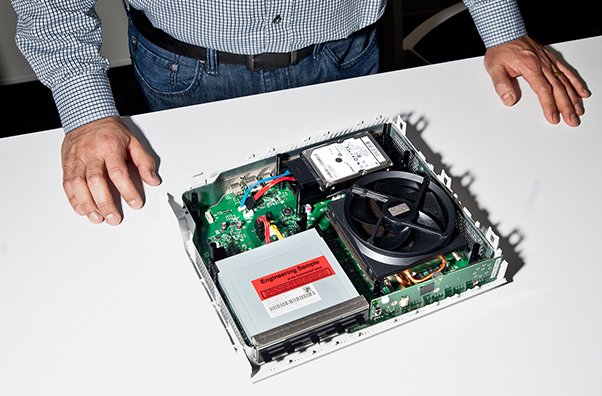Game developers will be able to use that GPU time in the future, though.
by Kyle Orland
The Xbox One's ability to run up to four apps in the background (or on the side via Snap mode) during gameplay and to switch from a game to those apps almost instantaneously obviously comes at some cost to the system's maximum theoretical gaming performance. Now, thanks to an interview with Xbox technical fellow Andrew Goossen over at Digital Foundry we have some idea of the scale of that performance cost.
"Xbox One has a conservative 10 percent time-sliced reservation on the GPU for system processing," Goossen told the site. "This is used both for the GPGPU processing for Kinect and for the rendering of concurrent system content such as snap mode."
It's important to note that additional processing time for the next-generation Kinect sensor is included in that 10 percent number. Still, setting aside nearly a tenth of the GPU's processing time to support background execution of non-gaming apps is a bit surprising.

During a recent demonstration of the Xbox One interface, Microsoft Director of Product Planning Albert Penello showed me how running multiple apps on the side or behind a concurrent game didn't lead to any noticeable degradation in gaming performance. Indeed, setting aside a good chunk of GPU processing to explicitly handle nongaming apps ensures that gaming performance doesn't bounce up and down depending on what may or may not be running in the background.
The downside, of course, is that developers are unable to use that reserved chunk of processing power. Not to worry, though; Goossen says that Microsoft plans to open up this power to developers in the future in a way that doesn't impact the system's background functions.
"The GPU hardware scheduler is designed to maximize throughput and automatically fills 'holes' in the high-priority processing," Goossen said. "This can allow the system rendering to make use of the ROPs for fill, for example, while the title is simultaneously doing synchronous compute operations on the compute units."
Sony's PlayStation 4 also allows for non-gaming apps to run in the background while games are playing and for instant switching between these apps, but the company has not gone into detail about what kind of impact this functionality has on the system's processing load.
Digital Foundry also has more from a wide-ranging interview with Goossen and Xbox hardware architect Nick Baker, touching on everything from RAM bandwidth and pixel shading to compute units and clock speed. It's well worth a read for anyone looking for a deep dive into the raw hardware power of Microsoft's next system.
Courtesy: arstechnica



0 comments:
Post a Comment